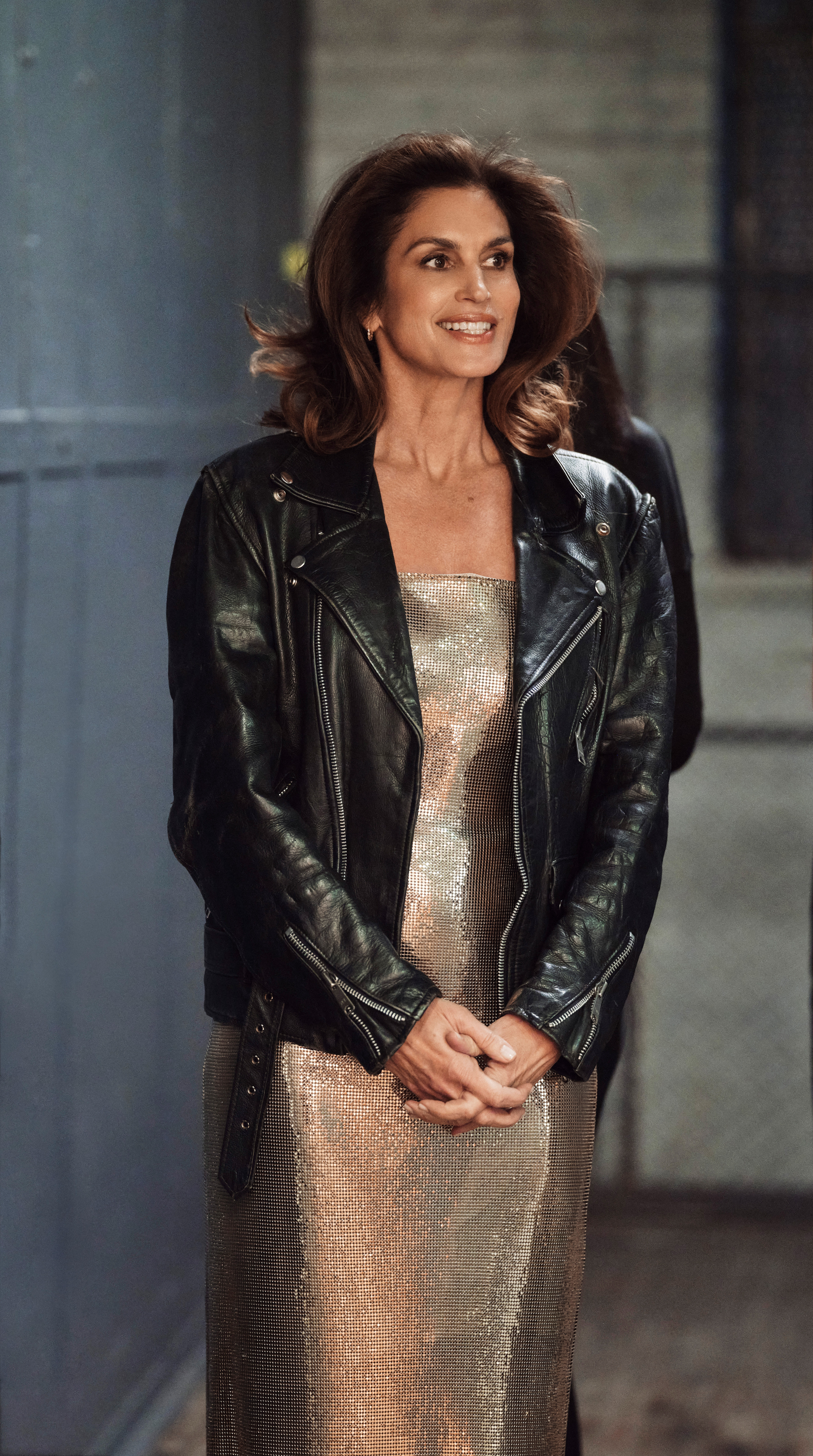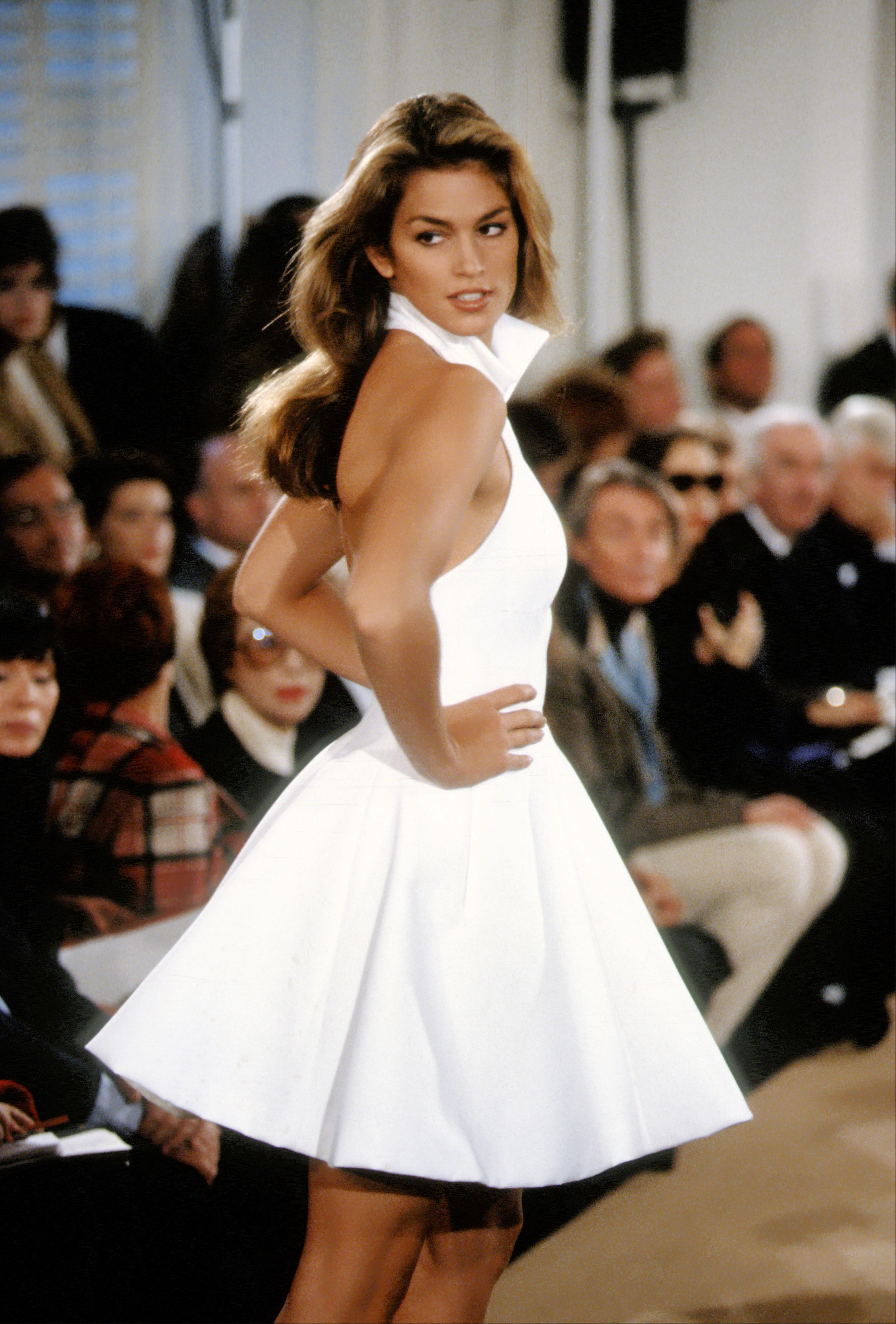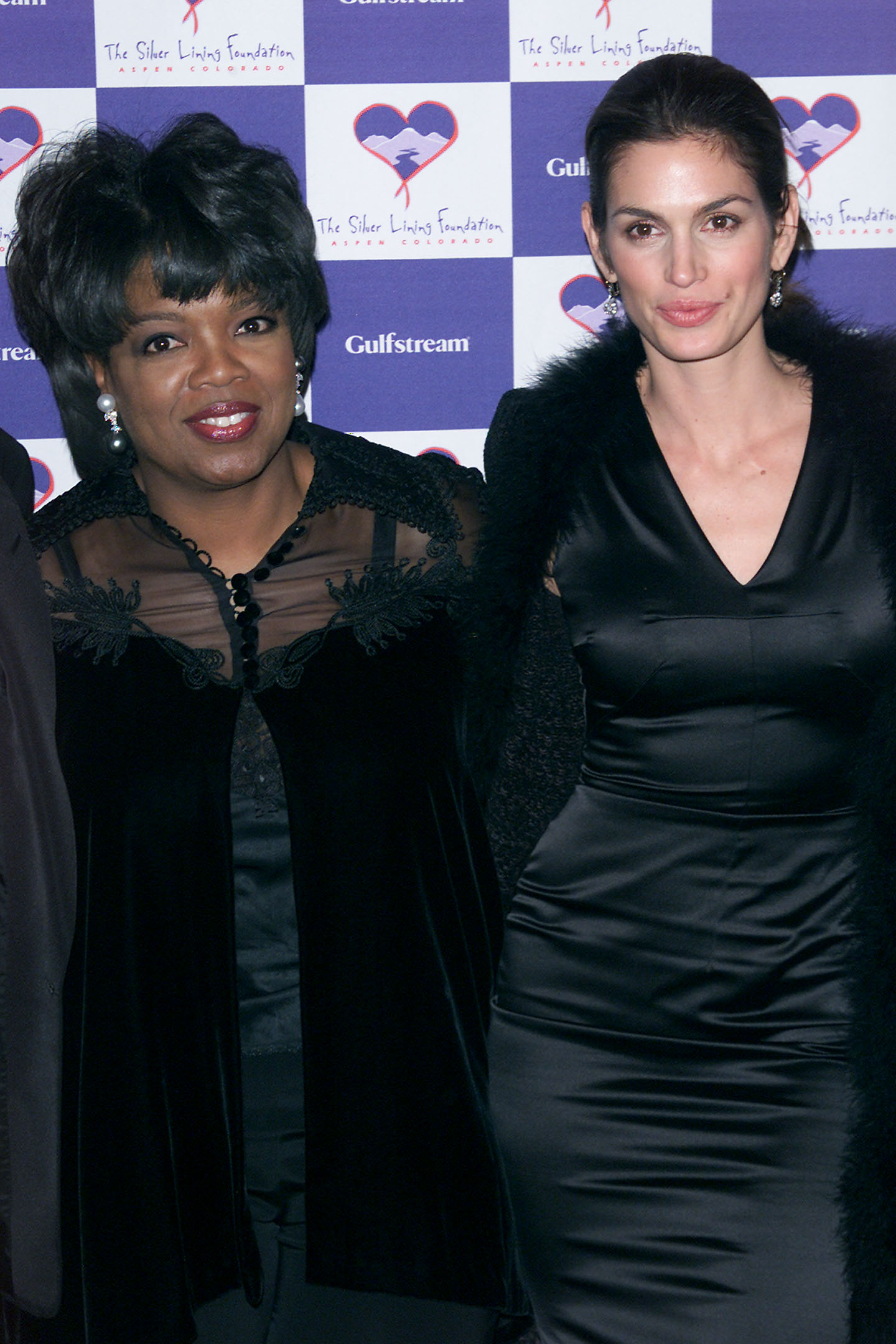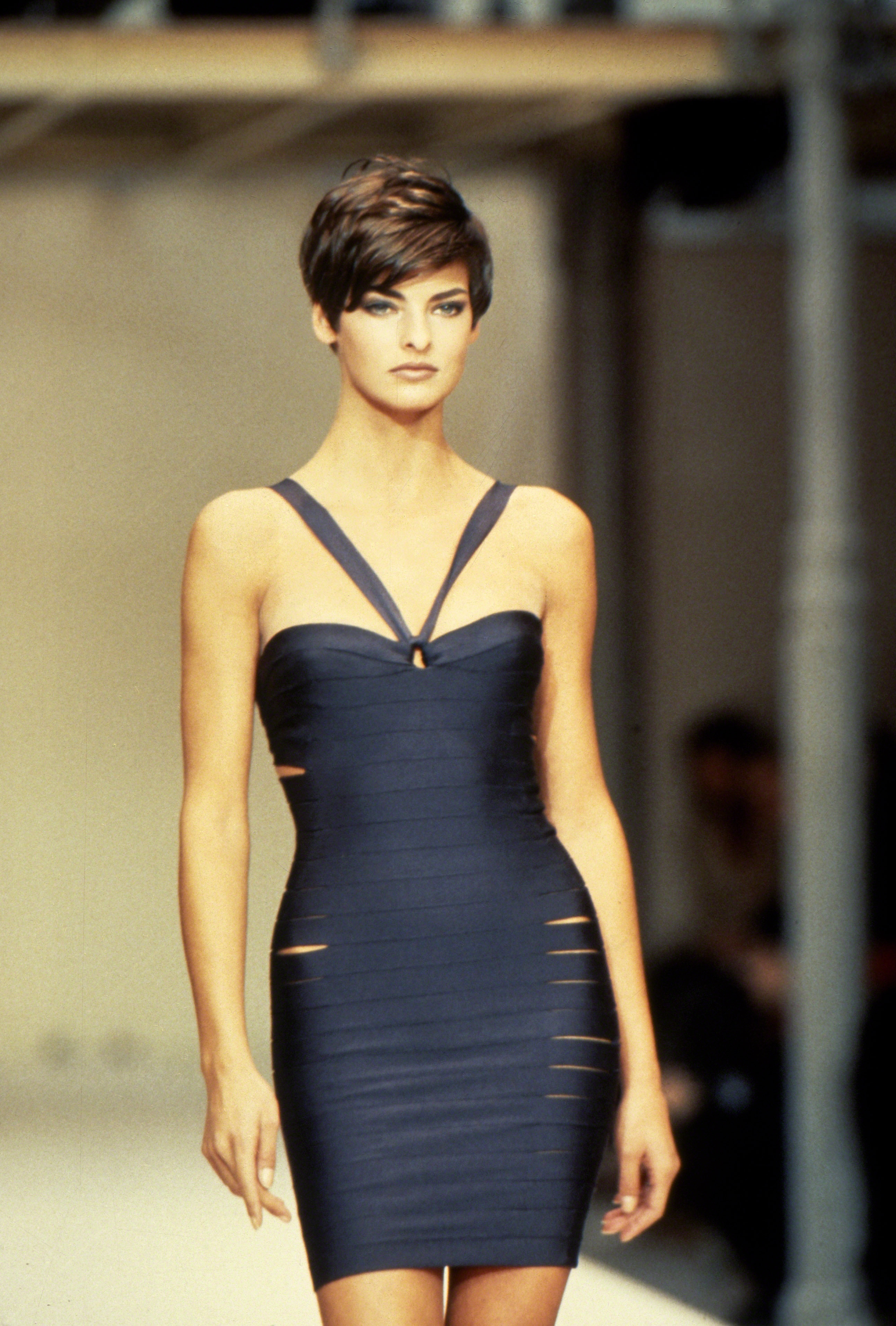

Though the uber-glamorous lives of Cindy Crawford, Linda Evangelista, Naomi Campbell and Christy Turlington—the four original fashion legends so ubiquitous they’ve become mononymously revered—are often lionised, Apple TV+’s new docuseries The Super Models is shining a light on the behind-the-scenes reality of these runway mainstays.
Broken down into four chapters—‘The Look’, ‘The Fame’, ‘The Power’ and ‘The Legacy’—the first half of the series showcases the nascent rise of four small-town teenagers who are catapulted above the upper echelon of the fashion industry.
Yet, despite how enviable their careers may seem, their ascension to the top of their game—which, in turn, completely galvanised fashion’s entire foundation—didn’t come without plight and peril.
In the opening two episodes, each of the titular supers makes shocking allegations, revealing for the first time their first-hand experience as bourgeoning models with little experience thrust in front of flashing lights. As Linda Evangelista said in the docuseries, the 80s and 90s “weren’t always perfect”.
Cindy Crawford revealed that she “was not seen as a person who had a voice in their own destiny,” even explaining one instance where she was violated on set by a famed photographer—who had a cameo in The Devil Wears Prada—who ignored her wishes.
Sharing secrets from some of our favorite editorial spreads, campaign shoots and runway looks, ahead we bring you the biggest revelations directly from Apple TV+’s The Super Models.
‘The Super Models’ is now streaming on Apple TV+.
The Biggest Revelations From Apple TV+’s The Super Models Docuseries
Cindy Crawford Grew Out Her Iconic Long Brunette Hair As A Trauma Response From Being Violated On-Set
In the first episode of the series, which explores the super’s humble origins from 1983 onwards, Cindy Crawford reveals a “traumatising” experience with famed photographer Patrick Demarchelier.
Demarchelier, who is best known for evocative black-and-white portraits and a spoken cameo in The Devil Wears Prada—as you’ll recall, Meryl Streep’s Miranda Priestly barks at Anne Hathaway’s Andy Sachs to “get him on the phone—allegedly wanted to book Crawford for a job in Rome, but only if she “cut her hair off,” as the 57-year-old described it.
In a confessional, Crawford recounts how she as a then-18-year-old travelled to the Italian capital after her agent negotiated a deal with Demarchelier and declined his request.
“My agency and I decided no, it wasn’t worth it, so we said, ‘No, she’s not cutting her hair,’ and they said ‘Fine, we’ll take her anyway,'” Crawford claimed.
“I was so excited. It was just a great opportunity,” she added.
“The very first night, they sent a hairdresser to my room to give me a trim…they combed my hair, put it in a ponytail, and chopped my ponytail off without asking.”

“I was in shock. And I just sat there in a hotel room in Rome crying. And if people wonder why I never really cut my hair since then, that’s why. Because I was so traumatised,” she explained.
Her beauty trademark has since spawned countess beauty trends and recreations, but spawned from a moment where her wishes weren’t respected or valued.
Crawford noted that at the time she thought to herself that she didn’t have what it took to be a model if these would be the circumstances she was exposed to. “If this is what it means to be a model, I’m just not ready for this,” she said in reflection.
This isn’t the first time Crawford has spoken about the incident. The model also revealed in a 1995 interview that she “hated” Demarchelier because of it.
“Because of Patrick I wanted to go back to Chicago [her hometown] and stop modelling… it was awful.”
Watch the clip for yourself below:
Cindy Crawford Felt Like “Chattel” After An Interview With Oprah In 1986
Crawford also reflected on an instance in 1986, which she now views as “not ok”.
The moment Crawford referenced was her appearance on The Oprah Show alongside Elite Modeling Management owner John Casablancas—if you’ll recall, Crawford made it to the finals of Elite’s “Look Of The Year” in 1983 at only 17.
During her interview, Oprah Winfrey questioned Casablancas about Crawford, asking “Did she always have this body?”
“Stand up just a moment,” Oprah requested, which Crawford obliged. “Now this is what I call a body,” the journalist said while gesticulating towards Crawford’s figure.
In The Super Models, Crawford said the moment made her feel like “chattel” or a “child”.
“I was like the chattel, or a child, like ‘be seen and not heard’,” Crawford said in the series.
“When you look at it through today’s eyes Oprah’s like ‘stand up and show me your body’ like ‘how us why you’re worth why you’re worthy of being here’,” she continued.
“In the moment I didn’t recognise it and watching it back I was like, ‘Oh my gosh, that was so not okay really. Especially from Oprah!”
Oprah is yet to respond or comment on Crawford’s statement, but her team have quietly archived the video from Oprah’s YouTube page.

Linda Evangelista Regrets Saying “We Don’t Wake Up For Less Than $10,000 A Day”
Back in 1990, VOGUE published an interview with Linda Evangelista, quoting her saying “We don’t wake up for less than $10,000 a day.”
At the time, it was viewed as an elite, out-of-touch comment that highlighted fashion’s frivolity.
Evangelista has spent decades of her life apologising for and regretting the remark, a sentiment she echos in The Super Models: “I shouldn’t have said that – that quote makes me crazy.”

Naomi Campbell Was Paid Less Than Her White Contemporaries
Naomi Campbell, who has famously used her platform to advocate against racial bias and champion Black representation in the industry, remarked in The Super Models that she was paid less than her white contemporaries.
“I wanted to be paid the same as the white models,” Campbell said, referencing how she fought to appear on the cover on VOGUE.
“I was working for Mr [Yves] Saint Laurent [at the time] so I told them. I didn’t know what type of power he had. I didn’t know he would say something,” she continued.
“The next thing I know, I was in New York…. I had no idea until it came out that it was the first time a Black person had been on a French VOGUE cover I didn’t think of it as breaking a barrier. I just looked at it as: ‘This can’t stop here, this can’t be the only token.”














